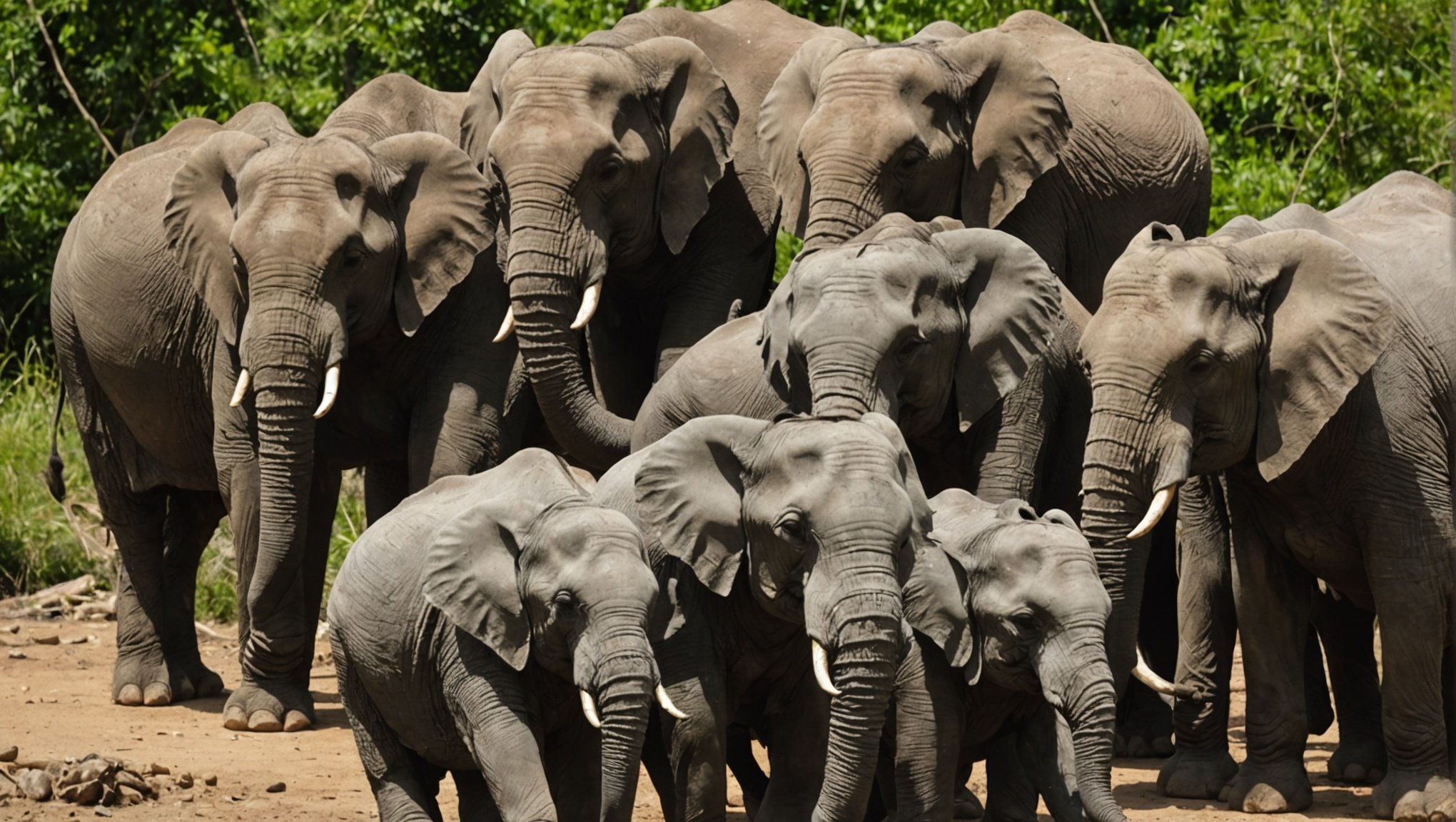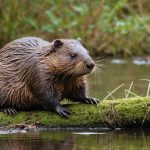Illegal wildlife trade continues to threaten biodiversity in the UK, yet many people remain unaware of its signs. Understanding how to identify and report these activities is essential for protecting endangered species. This guide offers practical insights into spotting suspicious behaviors and provides clear steps for reporting, empowering you to take action. Together, we can create a safer environment for wildlife and help conserve our natural heritage.
Understanding Illegal Wildlife Trade
The illegal wildlife trade is a major global issue, involving the unlawful exchange of wild animals and plants. This clandestine activity spans continents, affecting species across the globe. It includes the trafficking of live animals, parts, and derivatives, threatening biodiversity and ecosystems.
A lire en complément : Welcoming a New Kitten: Expert Tips for Introducing Your Corgi with Strong Herding Instincts
Definition and Scope
Wildlife trafficking is not just limited to exotic species; it encompasses a wide range of flora and fauna. The trade is driven by demand for pets, traditional medicine, food, and luxury goods. It is a multi-billion-dollar industry, ranking among the top illegal trades worldwide, alongside drugs and arms.
Global and UK-Specific Statistics
Globally, the illegal wildlife trade is valued at an estimated $7 to $23 billion annually. In the UK, authorities have reported a rise in cases, with seizures of items like ivory and rhino horn becoming more frequent. This highlights the country’s role as both a destination and transit point for trafficked wildlife.
A lire en complément : Strategic Tech Solutions for UK Farmers: Coexisting with Badgers While Protecting Livestock
Impact on Biodiversity and Ecosystems
The consequences of this trade are dire. It leads to a decline in species populations, disrupting ecosystems and causing irreversible damage. Conservation issues arise as species are pushed towards extinction, impacting not only the environment but also local communities dependent on these resources. Addressing this trade is crucial for maintaining ecological balance and protecting our planet’s natural heritage.
Common Signs of Illegal Wildlife Trade
Recognising the signs of wildlife trafficking is crucial in combating this illicit activity. Various physical and behavioural indicators can help in identifying illegal trade.
Physical Signs
One of the most apparent wildlife indicators is the presence of unusual animal offerings in markets. These may include exotic pets or animal parts like ivory and rhino horns. Such items are often sold discreetly, sometimes hidden among legal goods. Additionally, sellers may lack proper documentation or licenses, raising further suspicion.
Behavioural Signs in Local Communities
Local communities may exhibit behavioural changes due to the illegal trade. Increased security or secrecy around certain areas can be a red flag. Community members might avoid discussing specific topics or display reluctance to engage with outsiders. These behaviours often indicate underlying illicit activities.
Seasonal Patterns and Their Significance
Seasonal patterns can also be significant indicators of wildlife trafficking. Certain species are more vulnerable during breeding seasons, leading to spikes in illegal activity. Traffickers exploit these periods to capture and trade animals when they are most accessible. Understanding these patterns aids in predicting and preventing trafficking incidents.
Types of Wildlife Involved
The illegal wildlife trade encompasses a wide array of species, with endangered species often being the most sought after due to their rarity and high market value. In the UK, there is a notable prevalence of wildlife smuggling involving both native and exotic animals.
Commonly Trafficked Animals
Frequently trafficked species include reptiles, birds, and mammals. Exotic pets such as parrots and turtles are popular, often smuggled into the country without proper documentation. Additionally, parts of animals like ivory and rhino horns remain in high demand despite stringent regulations.
Endangered Species and Legal Protections
Specific endangered species face significant threats from illegal trade. For instance, the European eel, a critically endangered species, is often trafficked for consumption in Asian markets. Legal protections under the Convention on International Trade in Endangered Species (CITES) aim to curb such activities, but enforcement remains challenging.
Notable Trafficking Incidents
Several high-profile cases highlight the ongoing issue. In one incident, authorities intercepted a shipment containing hundreds of live reptiles destined for the UK. Such cases underscore the persistent threat that wildlife smuggling poses to biodiversity and the need for robust enforcement and international cooperation.
Legal Framework Surrounding Wildlife Trade
Understanding the legal framework is crucial in addressing the illegal wildlife trade. In the UK, a combination of national and international measures forms the basis of wildlife protection laws.
UK Wildlife Legislation
The UK has stringent wildlife protection laws aimed at safeguarding native and exotic species. Key legislation includes the Wildlife and Countryside Act 1981, which prohibits the trade of certain species and their derivatives. This act provides a robust legal definition of protected species, setting clear guidelines for enforcement.
International Agreements
International agreements, such as the Convention on International Trade in Endangered Species of Wild Fauna and Flora (CITES), play a significant role in shaping UK wildlife legislation. CITES regulates the international trade of endangered species, requiring member countries to implement strict controls. The UK, as a signatory, is obligated to adhere to these regulations, ensuring that wildlife trade does not threaten species’ survival.
Consequences of Violations
Breaking wildlife protection laws can lead to severe penalties, including fines and imprisonment. These consequences serve as a deterrent, emphasizing the importance of compliance. By understanding and enforcing these laws, the UK aims to combat wildlife trafficking effectively, protecting biodiversity and preserving natural heritage.
The Reporting Process for Illegal Wildlife Trade
Reporting wildlife crime is a critical step in combating illegal activities and protecting endangered species. Understanding how to report such incidents effectively can make a significant difference.
Step-by-Step Guide on Reporting
When you suspect illegal wildlife activities, it’s essential to act promptly. First, gather as much information as possible, including location, time, and details of the activity. Next, contact the relevant wildlife crime authorities. In the UK, this often involves reaching out to local police, the National Wildlife Crime Unit (NWCU), or Crimestoppers. Providing clear, concise information ensures authorities can respond effectively.
Key Organizations and Authorities to Contact
Several organizations play pivotal roles in addressing wildlife crime. The NWCU is a specialized body focused on investigating and preventing wildlife-related offenses. Additionally, Crimestoppers offers a confidential platform for reporting anonymously. Engaging with these bodies ensures that your report reaches the right channels.
Importance of Providing Evidence and Documentation
When reporting, supplying evidence and documentation is crucial. Photographic or video evidence can support your claims and assist authorities in their investigations. Detailed documentation enhances the credibility of your report, enabling a more efficient response to wildlife crimes.
Resources for Reporting and Information
When tackling illegal wildlife trade, having access to the right resources is crucial. A variety of wildlife conservation resources are available to assist individuals in reporting incidents and gaining further knowledge.
Important Hotlines and Websites
Several key wildlife hotlines and websites facilitate the reporting of wildlife crime. In the UK, the National Wildlife Crime Unit (NWCU) offers a dedicated hotline for reporting suspicious activities. Additionally, Crimestoppers provides an anonymous reporting service, ensuring confidentiality. For global concerns, the World Wildlife Fund (WWF) and TRAFFIC offer platforms to report and gather information.
Educational Resources
Understanding the complexities of wildlife trade is essential. Numerous educational resources are available online, including webinars, articles, and reports from organizations like WWF and TRAFFIC. These resources provide insights into the trade’s impact on biodiversity and offer guidance on how to contribute to conservation efforts.
Community Organizations
Local and international community organizations play a vital role in wildlife protection. Groups such as The Wildlife Trusts and Friends of the Earth engage communities in conservation activities, raising awareness and fostering collaboration. By connecting with these organizations, individuals can participate in initiatives aimed at safeguarding wildlife and promoting sustainable practices.
Case Studies of Successful Interventions
Exploring wildlife trade success stories reveals how strategic conservation interventions and legal action cases have made significant impacts. In the UK, several successful prosecutions highlight the effectiveness of robust legal frameworks. For instance, a notable case involved the conviction of a trafficker dealing in rhino horn, resulting in a substantial prison sentence. This demonstrates the power of stringent enforcement in deterring illegal activities.
Community involvement plays a crucial role in these successes. Local communities, acting as vigilant observers, often provide critical information leading to arrests. Their active participation in reporting suspicious activities has proven invaluable, showcasing the importance of public engagement in combatting wildlife crime. This collaborative approach not only aids law enforcement but also empowers communities to protect their natural heritage.
Lessons learned from previous cases underscore the need for continuous education and awareness. Successful interventions often stem from well-informed communities and authorities working together. By sharing knowledge and experiences, stakeholders can develop more effective strategies to tackle the illegal wildlife trade. These stories serve as a blueprint for future efforts, emphasizing the importance of cooperation and persistence in the fight against wildlife trafficking.
Identifying and Documenting Evidence
When tackling the illegal wildlife trade, effective evidence collection is paramount. Observing and documenting activities can provide crucial insights that aid in enforcement and conservation efforts.
Techniques for Observing and Documenting Wildlife Trade
Engaging in wildlife documentation involves meticulous observation and recording. Techniques include discreetly noting down details such as the species involved, location, and time of the activity. Photo identification serves as a powerful tool, capturing indisputable evidence of illegal trade. Photographs should clearly depict the wildlife or products in question, ensuring they are date-stamped for authenticity.
Importance of Photography and Notes in Reporting
Photography plays a critical role in substantiating claims of illegal activities. Clear images can help authorities identify species and trace the origins of trafficked goods. Complementing photographs with detailed notes enhances the credibility of the report, providing a comprehensive account of the observed activities.
Ethical Considerations When Documenting Evidence
While collecting evidence, ethical considerations are vital. It’s essential to ensure that evidence collection does not harm the wildlife or compromise ongoing investigations. Respecting privacy and avoiding confrontation are key, as is ensuring that all documentation is conducted legally and responsibly. This ethical approach ensures the protection of both wildlife and individuals involved.
Getting Involved in Conservation Efforts
Engaging in wildlife conservation participation offers individuals a tangible way to contribute to preserving biodiversity. Across the UK, numerous local and national initiatives welcome community involvement. These initiatives range from wildlife monitoring projects to habitat restoration efforts, providing diverse opportunities for engagement.
Community Conservation and Activism
Community conservation plays a pivotal role in safeguarding local ecosystems. By participating in local conservation groups, individuals can help monitor wildlife populations, report illegal activities, and restore natural habitats. Activism, such as participating in awareness campaigns or lobbying for stronger legislation, empowers communities to influence policy and protect their environment.
Contributing to Conservation Efforts
Individuals can contribute to conservation efforts in various ways. Volunteering with conservation organizations, supporting sustainable practices, and advocating for wildlife protection are impactful actions. Additionally, educating oneself and others about the importance of biodiversity fosters a culture of conservation.
Raising Awareness in Local Communities
Raising awareness is crucial for effective wildlife conservation participation. By organizing community events, sharing information on social media, and engaging with local schools, individuals can spread knowledge about the threats facing wildlife. This awareness encourages community members to take proactive steps, fostering a collective commitment to conservation.
Future Trends in Wildlife Trade and Conservation
As the wildlife trade trends evolve, new patterns and challenges emerge, demanding adaptive strategies in future conservation efforts. One notable trend is the shift towards online platforms for illegal wildlife trade. This digital marketplace allows traffickers to reach a wider audience while evading traditional enforcement methods. Consequently, authorities are developing innovative strategies to monitor and intercept these transactions.
Evolving laws are anticipated to play a crucial role in addressing these challenges. Future legislation is expected to incorporate stricter penalties and enhanced international collaboration. Such measures aim to close loopholes that traffickers exploit, ensuring more robust enforcement. Additionally, the integration of technology into law enforcement practices is set to revolutionize how wildlife crimes are detected and prosecuted.
The role of technology in combating wildlife trafficking is increasingly significant. Advanced tools like AI-driven surveillance systems and blockchain for tracking wildlife products are being explored. These technologies offer promising solutions for real-time monitoring and secure data management, enhancing the effectiveness of conservation efforts. As these advancements continue to develop, they hold the potential to transform the landscape of wildlife protection, paving the way for more sustainable and efficient conservation strategies.
















